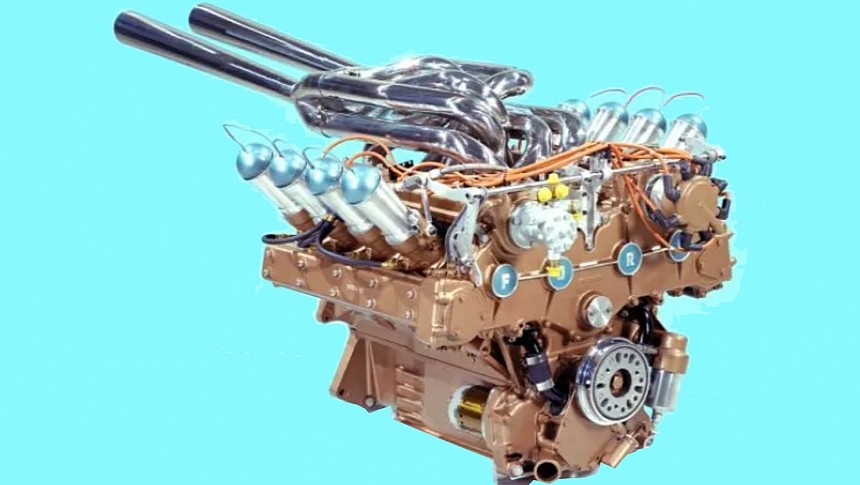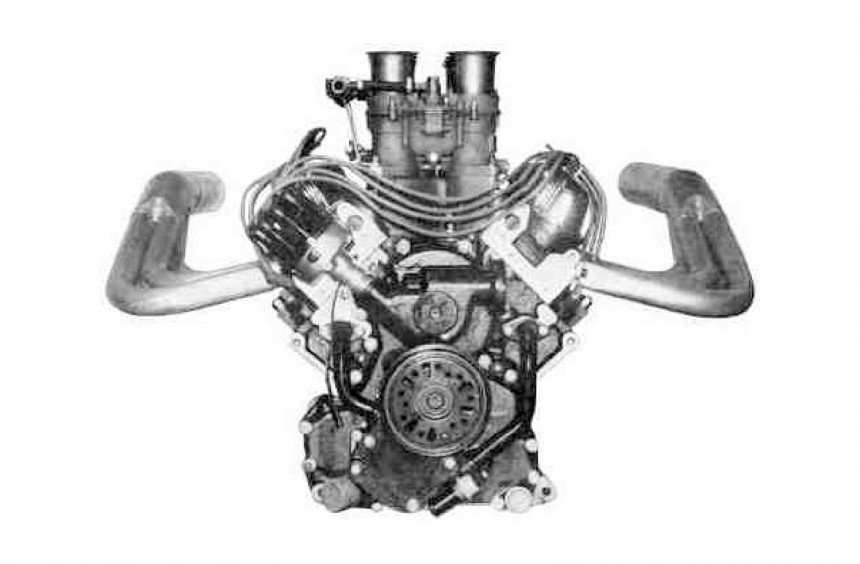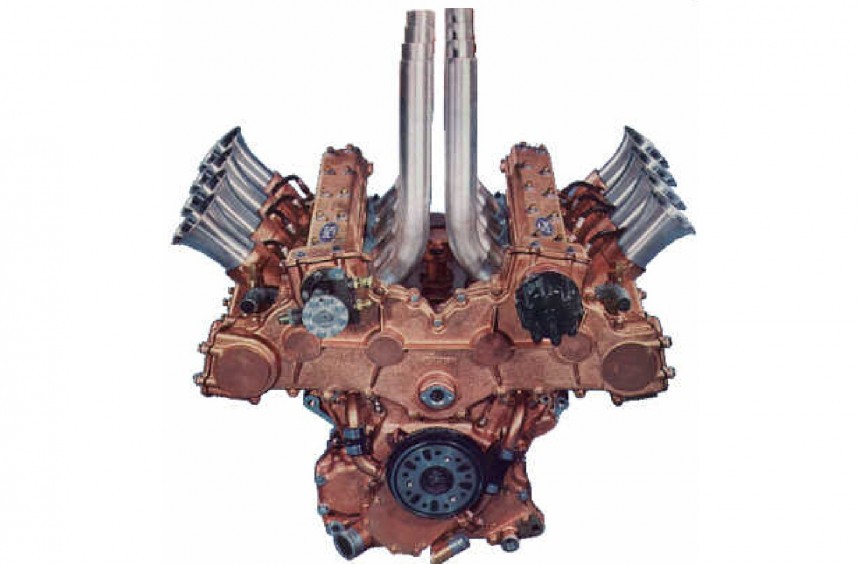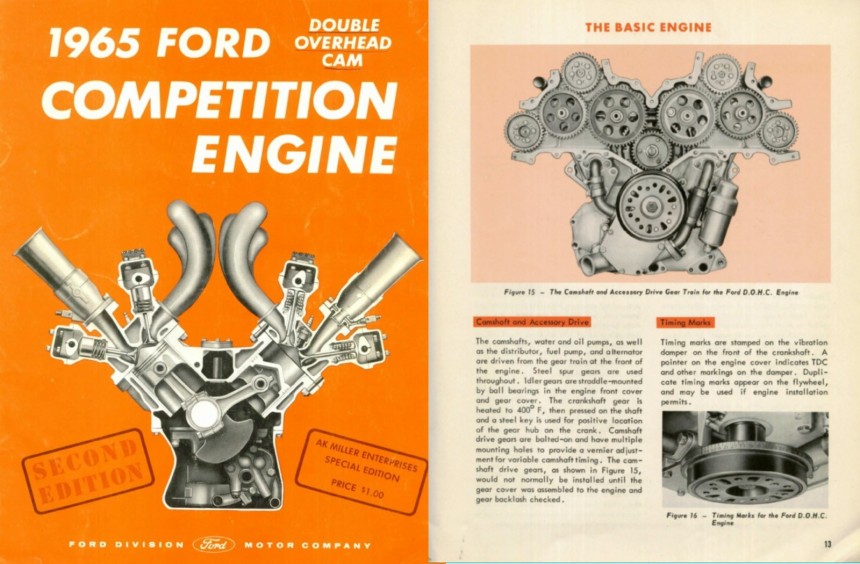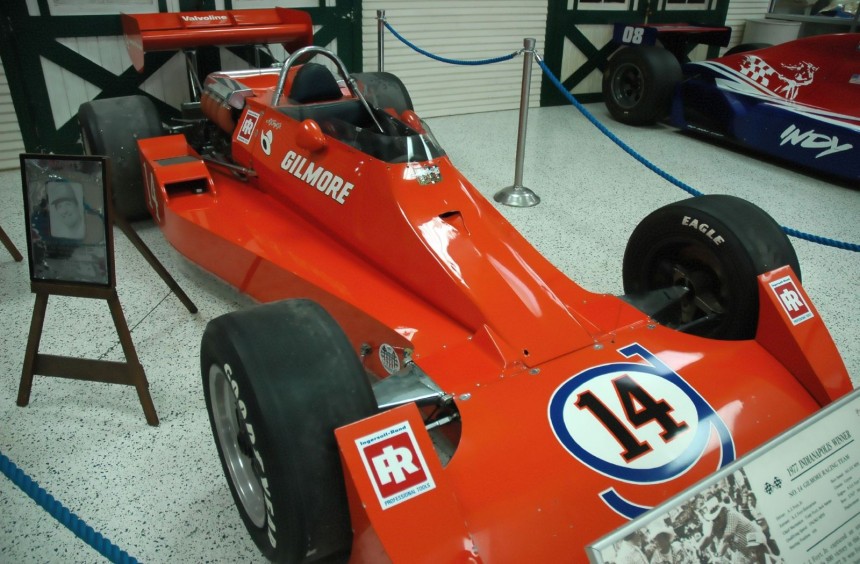One of the few race engines developed entirely in-house by Ford, the DOHC (dual overhead camshaft) Indy V8 was a gorgeous-looking engineering masterpiece and a highly successful unit responsible for no less than seven Indy 500 wins.
Although a V12 is generally more powerful, a V10 sounds nicer, and a V6 is easier to fit in a cramped engine bay; for most die-hard fans of the internal combustion engine, there's nothing better than a good old-fashioned V8.
This legendary configuration was born nearly a century ago in France, but it enjoyed its best years in the United States, where it became the most popular engine and kickstarted the horsepower wars that gave birth to muscle cars.
For many years, the V8 was also the cornerstone of motorsport, dominating various categories, from sports car racing to Formula 1.
In the US, Ford was one of the manufacturers which continually pushed the limits of the V8 to new heights on both the road and the track.
Today, the Blue Oval's most famous race-bred engines remain the 427 that helped the company conquer Le Mans, the SOHC 427 "Cammer" that didn't get to compete against the 426 HEMI in NASCAR, but made a name for itself on the drag strip, and of course, the Formula 1-dominating DFV that was developed alongside British experts Cosworth.
Nevertheless, in the past, Ford built a multitude of highly successful competition V8s that younger generations have forgotten. Among these, probably the most outstanding was the DOHC Indy which debuted in 1964.
Throughout the years, Ford partnered with several companies to develop its race engines. The Le Mans 427 was built with help from Shelby American, Cosworth designed the DFV, and the list can go on.
However, when Ford wanted to build a new race engine for the 1963 Indianapolis 500, it did so without using outside help.
It all started in the fall of 1962 when, Bill Gay, the lead engineer of the company's Advanced Engines department, assembled a team of the company's most talented individuals and proceeded to create a masterpiece.
The objective was to build a unit that would displace no more than 255 ci (4.17 liters), make well over 325 hp, and, ultimately, prove better than the Offenhauser engines that dominated past editions of the famous race.
During the first phases of the project, the team pulled a high-performance version of the 260-ci (4.3-liter) Fairlane V8 (the one used in the Falcon, Comet, and early Shelby Cobras) off the assembly line and proceeded to transform it into an all-aluminum race unit.
At first, the stock cast-iron block with bespoke internals and cylinder heads was tested. Then, by the spring of 1963, the heavily-modified race unit was ready for the Indy 500 trials.
Displacing 255-ci (4.17-liters), the first Ford Indy V8 was delivered to Team Lotus with a dyno-tested output of 365 hp. After around 450 miles (724 km) of track testing, it was put on a dyno again, and the figure rose to 376 hp.
During the race, Jim Clark of Team Lotus finished second, confirming that the new engine had a lot of potential, so for the following year, Ford pulled out all stops and created an even better unit.
With the production-based pushrod valve layout proving to be the engine's weakest feature, the Ford engineering team began experimenting with several conventional DOHC layouts for the third development phase.
Eventually, they settled for a radical configuration in which the camshaft locations were reversed. Therefore, the exhaust cam sat on top of the intake cam, which meant that the exhaust ports exited on top of the engine. Consequently, the humongous intake ports were directed between the camshaft towers, giving the Phase III DOHC Indy its unique appearance.
The space where the camshaft used to sit in the standard production configuration was swapped with an oil tube. This tube operated as a drain that collected oil as it dripped from above, keeping it off the reciprocating assembly.
Apart from the radical redesign of the cylinder heads, the DOHC Indy received a long list of upgrades like a special forged steel crankshaft, cross-drilled rod journals, conrods sourced from the 289 HiPo that was modified to work with floating pins, forged aluminum pent-roof pistons, and a cast-magnesium oil pan for the dry-sump oiling system.
With all these revisions, the DOHC Indy could now make 425 hp at 8,000 rpm and 295 lb-ft (400 Nm) of torque at 6,400 rpm.
Unfortunately, the upgraded engine wasn't enough for Ford and Team Lotus to win the Indy 500 in 1964. However, from 1965 to 1967, the engine powered the winning race car each year. In 1965, Jim Clark and his Lotus 38 crossed the finish line first. A year later, Ford started supplying the engine to other teams, which helped Graham Hill and his Lola T90 win the race. Finally, in 1967, A. J. Foyt and his Coyote 67 brought a third win for the Ford Indy engine, but it wasn't the last.
By 1968, the Offenhauser engines (aka Offys) were making a comeback thanks to the use of turbochargers. Ford lost the race that year, so its engineers countered by developing a smaller, turbocharged version of the DOHC Indy.
Destroked to 159 ci (2.6 liters) and seemingly chocked by intricate exhaust plumbing but capable of no less than 750 hp at 9,500 rpm, the turbocharged version gave Ford another Indy 500 win in 1969. The winning car was a Brawner Hawk driven by the legendary Mario Andretti.
The following year, Al Unser Sr., in his turbocharged DOHC Indy-powered Colt 70, brought another win for Ford. After that year, the Blue Oval retired from the Indy 500, but the DOHC Indy project continued under A.J. Foyt's stewardship.
Al Unser Sr. and his Ford-powered Colt 71 retook the victory in 1971. Although the Offys started dominating the Indy 500 again in the following years, the DOHC Indy had one final moment of glory in 1977 when A.J. Foyt grabbed his second Indy 500 victory.
With seven Indy 500 victories to its resume and an unconventional, yet gorgeous design, the Ford DOHC Indy went down in history as one of Detroit's greatest race engines. Although overshadowed by other succesful competition motors that donned Blue Oval badges, the Indy deserves to be remembered and celebrated by current and future generations of V8 enthusiasts.
You can see and hear this mighty powerplant rumbling in the YouTube video below by callanrs2000.
This legendary configuration was born nearly a century ago in France, but it enjoyed its best years in the United States, where it became the most popular engine and kickstarted the horsepower wars that gave birth to muscle cars.
For many years, the V8 was also the cornerstone of motorsport, dominating various categories, from sports car racing to Formula 1.
In the US, Ford was one of the manufacturers which continually pushed the limits of the V8 to new heights on both the road and the track.
Today, the Blue Oval's most famous race-bred engines remain the 427 that helped the company conquer Le Mans, the SOHC 427 "Cammer" that didn't get to compete against the 426 HEMI in NASCAR, but made a name for itself on the drag strip, and of course, the Formula 1-dominating DFV that was developed alongside British experts Cosworth.
Nevertheless, in the past, Ford built a multitude of highly successful competition V8s that younger generations have forgotten. Among these, probably the most outstanding was the DOHC Indy which debuted in 1964.
Designed in-house
However, when Ford wanted to build a new race engine for the 1963 Indianapolis 500, it did so without using outside help.
It all started in the fall of 1962 when, Bill Gay, the lead engineer of the company's Advanced Engines department, assembled a team of the company's most talented individuals and proceeded to create a masterpiece.
Initially based on a production Fairlane V8
During the first phases of the project, the team pulled a high-performance version of the 260-ci (4.3-liter) Fairlane V8 (the one used in the Falcon, Comet, and early Shelby Cobras) off the assembly line and proceeded to transform it into an all-aluminum race unit.
At first, the stock cast-iron block with bespoke internals and cylinder heads was tested. Then, by the spring of 1963, the heavily-modified race unit was ready for the Indy 500 trials.
Displacing 255-ci (4.17-liters), the first Ford Indy V8 was delivered to Team Lotus with a dyno-tested output of 365 hp. After around 450 miles (724 km) of track testing, it was put on a dyno again, and the figure rose to 376 hp.
During the race, Jim Clark of Team Lotus finished second, confirming that the new engine had a lot of potential, so for the following year, Ford pulled out all stops and created an even better unit.
The 1964 DOHC Indy and its first three Indy 500 titles
Eventually, they settled for a radical configuration in which the camshaft locations were reversed. Therefore, the exhaust cam sat on top of the intake cam, which meant that the exhaust ports exited on top of the engine. Consequently, the humongous intake ports were directed between the camshaft towers, giving the Phase III DOHC Indy its unique appearance.
The space where the camshaft used to sit in the standard production configuration was swapped with an oil tube. This tube operated as a drain that collected oil as it dripped from above, keeping it off the reciprocating assembly.
Apart from the radical redesign of the cylinder heads, the DOHC Indy received a long list of upgrades like a special forged steel crankshaft, cross-drilled rod journals, conrods sourced from the 289 HiPo that was modified to work with floating pins, forged aluminum pent-roof pistons, and a cast-magnesium oil pan for the dry-sump oiling system.
With all these revisions, the DOHC Indy could now make 425 hp at 8,000 rpm and 295 lb-ft (400 Nm) of torque at 6,400 rpm.
Unfortunately, the upgraded engine wasn't enough for Ford and Team Lotus to win the Indy 500 in 1964. However, from 1965 to 1967, the engine powered the winning race car each year. In 1965, Jim Clark and his Lotus 38 crossed the finish line first. A year later, Ford started supplying the engine to other teams, which helped Graham Hill and his Lola T90 win the race. Finally, in 1967, A. J. Foyt and his Coyote 67 brought a third win for the Ford Indy engine, but it wasn't the last.
The 1968 turbocharged DOHC Indy
Destroked to 159 ci (2.6 liters) and seemingly chocked by intricate exhaust plumbing but capable of no less than 750 hp at 9,500 rpm, the turbocharged version gave Ford another Indy 500 win in 1969. The winning car was a Brawner Hawk driven by the legendary Mario Andretti.
The following year, Al Unser Sr., in his turbocharged DOHC Indy-powered Colt 70, brought another win for Ford. After that year, the Blue Oval retired from the Indy 500, but the DOHC Indy project continued under A.J. Foyt's stewardship.
Al Unser Sr. and his Ford-powered Colt 71 retook the victory in 1971. Although the Offys started dominating the Indy 500 again in the following years, the DOHC Indy had one final moment of glory in 1977 when A.J. Foyt grabbed his second Indy 500 victory.
With seven Indy 500 victories to its resume and an unconventional, yet gorgeous design, the Ford DOHC Indy went down in history as one of Detroit's greatest race engines. Although overshadowed by other succesful competition motors that donned Blue Oval badges, the Indy deserves to be remembered and celebrated by current and future generations of V8 enthusiasts.
You can see and hear this mighty powerplant rumbling in the YouTube video below by callanrs2000.
